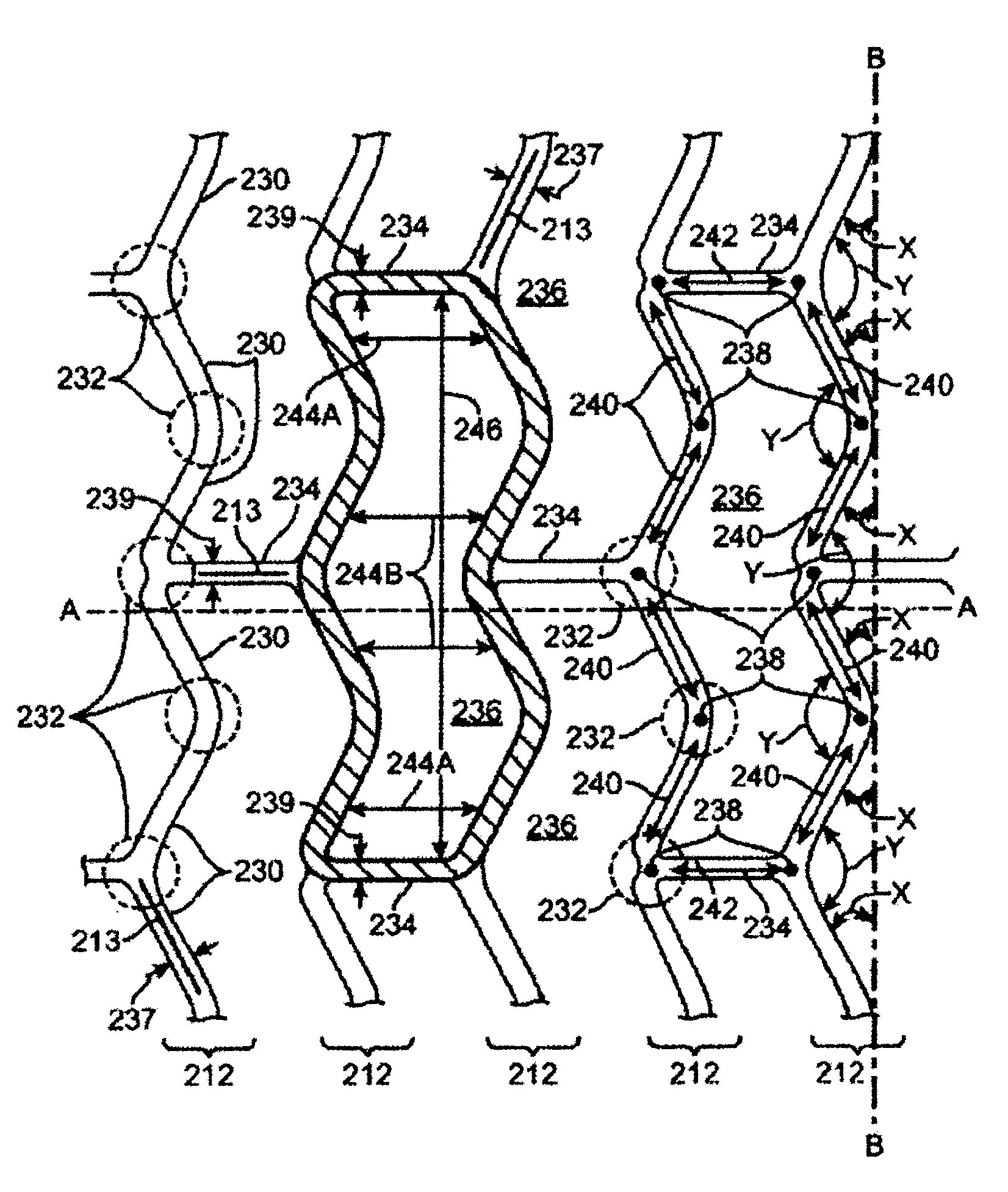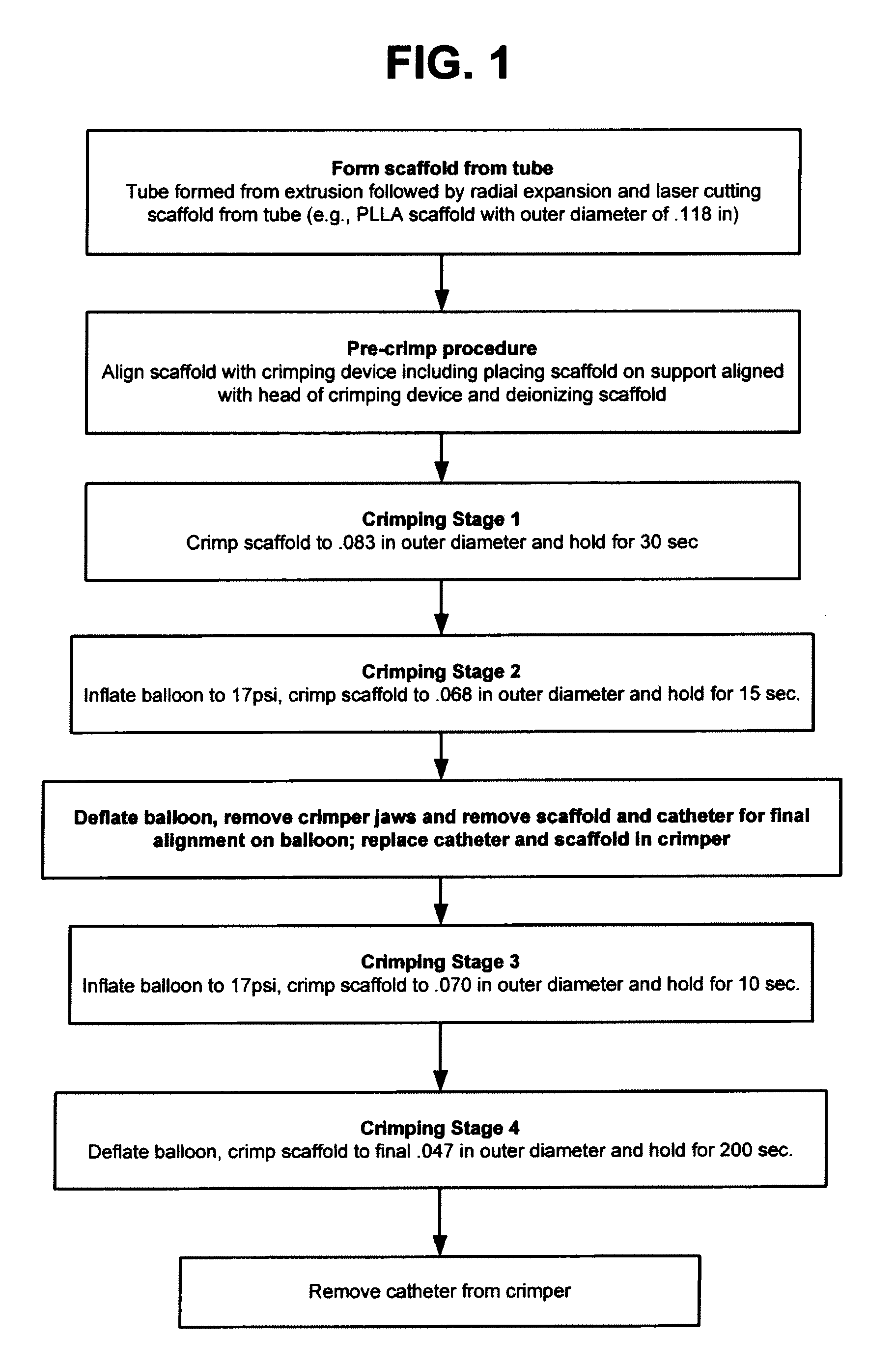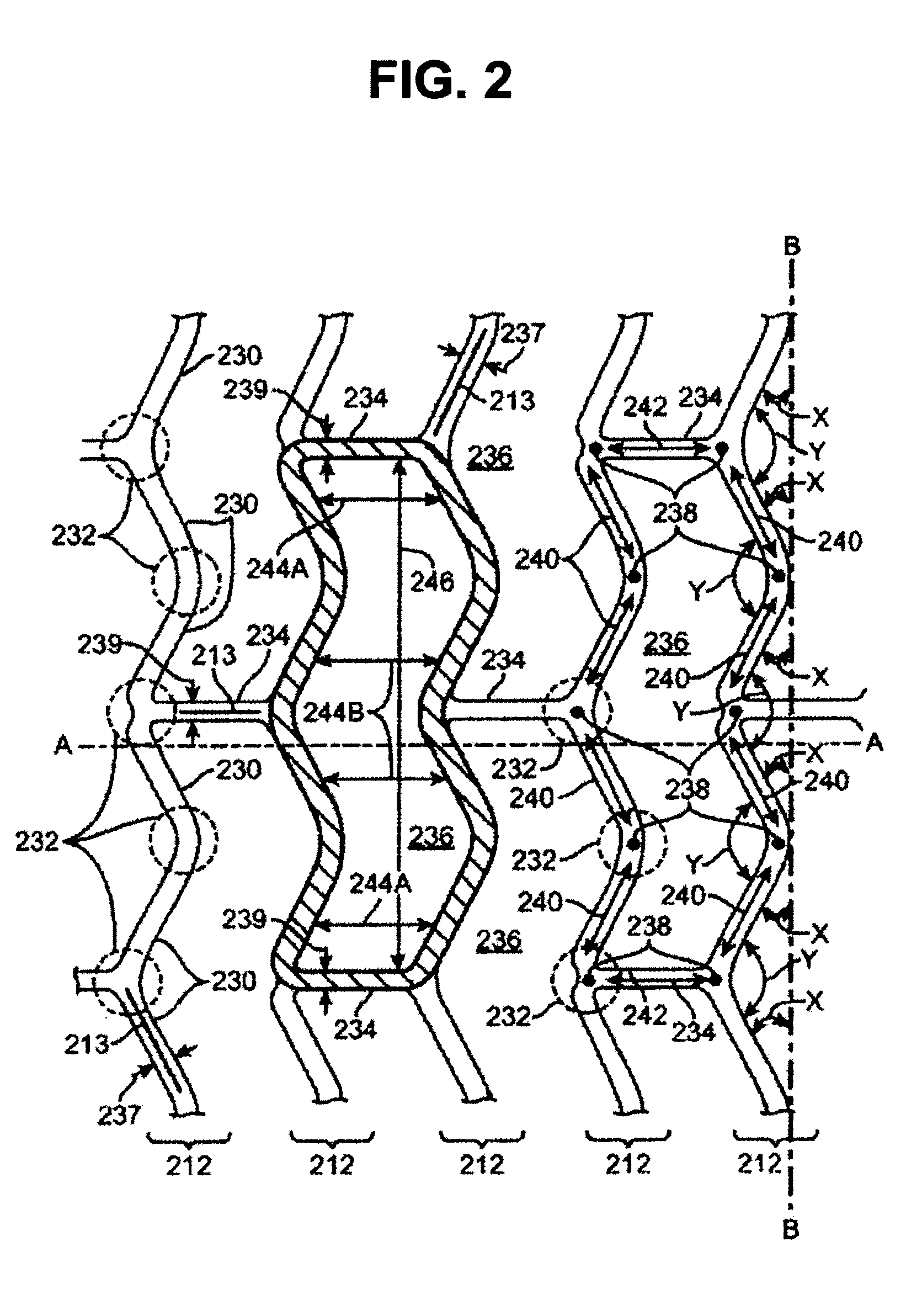Methods for Crimping a Polymeric Stent Scaffold Onto a Delivery Balloon
a polymer stent and balloon technology, applied in the field of drugeluting medical devices, can solve the problems of inability to significantly influence the way the scaffold is positioned, more frequent misalignment problems, and easy damage to the polymer scaffold, so as to improve the alignment accuracy and improve the accuracy of alignmen
- Summary
- Abstract
- Description
- Claims
- Application Information
AI Technical Summary
Benefits of technology
Problems solved by technology
Method used
Image
Examples
Embodiment Construction
[0027]The invention arose out of a need to solve a problem of high rejection rates, for polymer scaffolds during a pre-crimp process that could not be explained, or cured by existing methods for diagnosing or solving, respectively, crimping problems. During a pre-crimp process, the scaffold diameter is reduced to a diameter intermediate of its starting diameter and a final crimped diameter on the balloon. After the scaffold's diameter has been reduced in diameter by the crimper, the scaffold is placed on a balloon of the delivery catheter and re-inserted into the crimper. The crimper reduces the scaffold diameter to its final, crimped diameter on the balloon. When reduced down to the final crimped diameter, there is a retention force between the scaffold and balloon for retaining the scaffold on the balloon. The disclosure refers to a stent “scaffold”. It will be understood that the same processes and apparatus described herein apply to a balloon expandable “stent” that uses a scaff...
PUM
| Property | Measurement | Unit |
|---|---|---|
| Angle | aaaaa | aaaaa |
| Angle | aaaaa | aaaaa |
| Angle | aaaaa | aaaaa |
Abstract
Description
Claims
Application Information
 Login to View More
Login to View More - R&D
- Intellectual Property
- Life Sciences
- Materials
- Tech Scout
- Unparalleled Data Quality
- Higher Quality Content
- 60% Fewer Hallucinations
Browse by: Latest US Patents, China's latest patents, Technical Efficacy Thesaurus, Application Domain, Technology Topic, Popular Technical Reports.
© 2025 PatSnap. All rights reserved.Legal|Privacy policy|Modern Slavery Act Transparency Statement|Sitemap|About US| Contact US: help@patsnap.com



